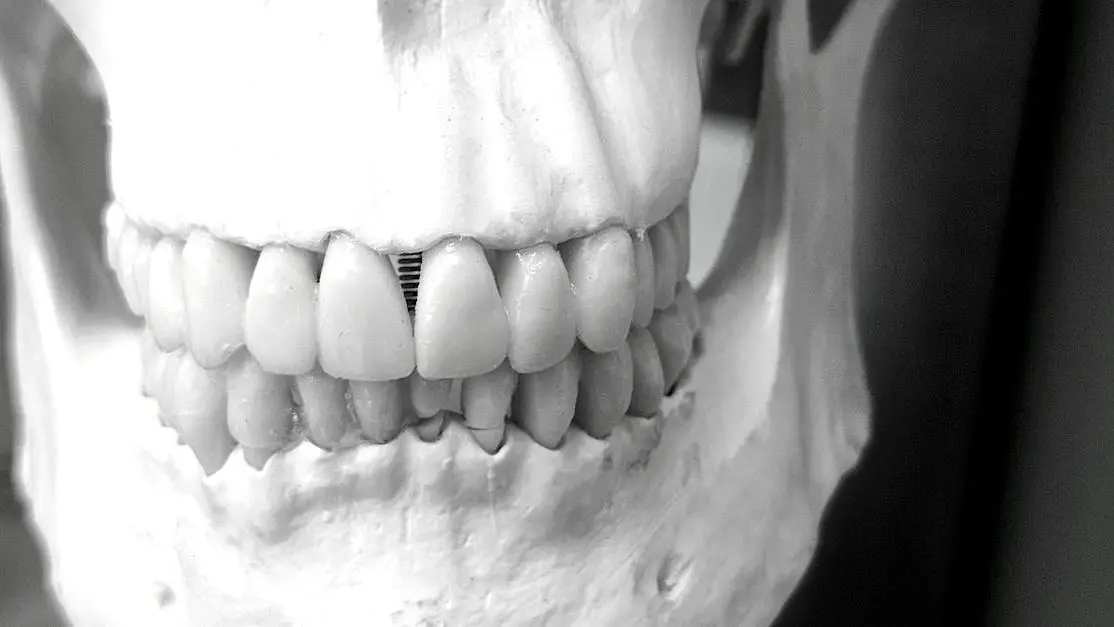Dental implant bone grafting explained: it’s a dental procedure that rebuilds or adds bone to your jaw, making it strong enough to support an implant where bone has been lost.
This technique helps ensure your dental implants are stable, long-lasting, and look and feel like natural teeth.
By restoring the jaw’s foundation, bone grafting can open the door to dental implants for many people—even if they’ve been told they don’t have enough bone. It’s a predictable, safe approach that’s become routine in modern dental care.
Families and individuals in Cookstown and nearby areas can count on this procedure to help achieve confident, healthy smiles with the support of trusted local professionals.
Why Do Dental Implant Bone Grafting Procedures Matter?
Bone grafting sets the stage for successful dental implants. Families and individuals in Cookstown and surrounding areas deserve lasting results, not short-term fixes. Too little jawbone puts implant stability at risk—no one wants a loose or failing restoration.
Why bone grafting is crucial:
- Loss of a tooth can result in up to 25% bone loss within a year, shrinking support for future implants and even distorting facial shape.
- Gum disease, injury, and aging often rob the jaw of volume, making implants harder or impossible until bone is restored.
- Advanced digital imaging, 3D scans, and gentle techniques now make grafting more comfortable and predictable than ever.
- Treating bone loss early protects against shifting teeth, facial collapse, and the cycle of further oral health issues.
Acting early with bone grafting saves time, money, and prevents future complications.
Our team at Cookstown Dental Centre leads the area in pain-free dentistry and advanced implant solutions. We use advanced tools, and you’ll never see a traditional syringe in our practice. Our goal: a seamless, comfortable experience for every patient in Cookstown, Alliston, Innisfil, and beyond. We keep families smiling, confident, and informed at every step.
What Is a Dental Implant Bone Graft and How Does It Work?
A dental implant bone graft adds strong support where it’s needed most—your jaw. The process uses bone (or a safe substitute) to strengthen weak spots so that an implant, and your bite, stay solid for years.
Osseointegration means the implant must fuse to dense, healthy bone. Grafts lay the “foundation” and fill gaps, whether you’re missing one tooth or many. Each patient’s needs vary: some just need a simple graft after an extraction; others may need larger repairs for full-arch restorations.
Types of bone grafting in plain terms:
- Grafts act as a “scaffolding” for new bone to attach and grow, building strength and volume at the target site.
- Cookstown Dental Centre uses careful diagnostics to choose between using your own bone or safe, proven substitutes like donor, animal, or synthetic materials.
- For a single implant, we may add a small graft or socket preservative. For more complex cases, procedures like sinus lifts add bone to areas naturally lacking height or density.
Osseointegration cannot happen without solid bone. Early, customized planning sets you up for a successful outcome.
When Is Bone Grafting Necessary Before Dental Implants?
You may not always need a bone graft. But for many, it’s the critical first step. Bone loss doesn’t only follow tooth removal—it can also result from gum disease, injury, or naturally thin bone.
You’ll know if bone grafting fits your plan after a dentist reviews your clinical exam and advanced 3D imaging.
Common reasons we recommend bone grafting:
- After extractions: Bone around missing teeth quickly shrinks, leaving less support for implants. Grafting preserves this support.
- Periodontal disease: Infection destroys bone, lowering your odds of a successful implant unless we rebuild what’s lost.
- Natural thinness: Some jaws never have enough bone for implants without assistance. Early detection helps us address this before problems start.
- Trauma: Injury or previous infection can leave large gaps or defects, making implants impossible without a graft.
Up to half of patients seeking implants need some degree of bone restoration for the safest, longest-lasting results.
What Types of Bone Grafts Are Used in Dentistry?
Choosing the right bone graft ensures stability, speeds healing, and keeps treatment personalized. We review health history, bone quality, and personal preferences as part of a detailed assessment.
Main categories of bone grafts:
- Autograft (your own bone): Offers top integration, usually from the chin or hip, fits cases needing dense, fast-regenerating bone. Involves another surgical site.
- Allograft (human donor): Well-processed and sterilized. Recommended when you want effective bone growth without another procedure on your body.
- Xenograft (animal bone, usually bovine): Sterile, compatible, often used for areas needing volume or gradual regeneration. No added surgical sites.
- Alloplast (synthetic): Modern, bioactive, great for those avoiding biological materials and smaller repairs.
Healing time is typically three to six months. Increasingly, we use advanced materials enhanced with growth factors to accelerate healing and improve results. The choice depends on your anatomy, specific needs, and preferences.
The right bone graft paired with a tailored plan can open doors to implants for almost anyone.
What Happens During a Dental Implant Bone Grafting Procedure?
Here’s what to expect with us—simple, detailed, and always focused on your comfort. We plan everything, so surprises are off the table.
After a personalized consultation and digital 3D imaging, we create a treatment plan. We use local anesthesia or gentle sedation. You stay relaxed and pain-free; we don’t use traditional syringes.
We access the area, place the graft, and often protect it with a barrier membrane, then close the site with dissolvable sutures. For some, grafting happens right after a tooth removal, streamlining recovery.
At-home care instructions and regular follow-up ensure healing. In smaller grafts, the procedure wraps in less than an hour. Our modern techniques—like platelet-rich fibrin—reduce swelling and accelerate recovery.
Using innovative grafting and pain-free methods, we help families, professionals, and busy parents recover comfortably and quickly.
What Is the Healing Process and Recovery Like?
Healing starts fast. Most feel initial recovery within one to two weeks. Full graft integration happens over three to six months—patience pays off with long-term success.
Expect some swelling and mild discomfort for several days. This is manageable with ice packs and over-the-counter medication. Most patients are back to daily activities in two days or less.
Smart aftercare for smooth healing:
- Stick to soft foods and avoid chewing near the surgical site. This protects your new graft and supports bone growth.
- Use gentle rinses—like saltwater or antimicrobial mouthwash—to keep your mouth clean and lower the risk of infection.
- Maintain good oral hygiene, but brush gently near the procedure area.
If you smoke or have health issues like diabetes, extra care and monitoring help ensure smooth healing. Don’t rush the implant stage. We use imaging to confirm your bone is ready for the next step. That discipline leads to strong, stable implants and fewer complications.
Quick action, consistent aftercare, and modern techniques make graft healing more comfortable than ever.
What Are the Risks, Benefits, and Success Rates?
Every dental procedure has its risks, but you deserve clarity and confidence. We prepare you for what to expect—no sugarcoating, just facts and reassurance.
Risks are rare and often easy to manage:
- Infection: Low risk due to modern sterilization and aftercare. We monitor healing at every stage.
- Graft rejection or exposure: Uncommon and often fixed with minor adjustments.
- Slower healing for smokers or those with uncontrolled diabetes: We coach you through ways to tip the odds in your favor.
Now for the upside: bone grafting boosts dental implant success rates to 95%–100% with proper care. That’s the kind of confidence we want for every patient.
Long-term bone grafting benefits that matter:
- Restores chewing power and diet variety. No more skipping favorites or worrying about dentures slipping.
- Supports facial shape. Prevents the “sunken” look often caused by bone loss.
- Protects your grin and keeps surrounding teeth where they belong.
With personalized planning and modern pain control, implant bone grafting works—again and again—for real families.
How Does Dental Implant Bone Grafting Fit With Painless Dentistry?
Dental fears? We hear this daily from families in Cookstown and nearby towns: “Will it hurt?” Our answer is simple—our commitment to pain-free dentistry changes the game. We use needle-free methods and state-of-the-art anesthesia. You stay comfortable and in control.
What makes our gentle approach unique:
- Needle-free anesthesia for a stress-free, smooth experience from start to finish.
- Sedation options for every comfort level—no guesswork, just reassurance.
- A step-by-step explanation with zero surprises, so you know exactly what’s coming next.
- Support for all ages and anxiety levels—our team knows how to calm nerves and build trust.
Most patients say grafting discomfort is similar to a simple filling—let us prove painless dentistry isn’t just a catchphrase.
Frequently Asked Questions About Dental Implant Bone Grafting
Questions are normal. You deserve answers—not fluff or generic reassurances. Here are the things patients ask most as they plan for dental implant bone grafting in Cookstown, Alliston, and beyond.
Quick answers to common implant bone grafting questions:
- Will you use my own bone? For most, we use safe, sterilized donor or synthetic grafts so no need for second surgeries.
- How long before I get my implant? Usually three to six months after grafting, sometimes sooner for small single-tooth grafts.
- What if the graft doesn’t heal as planned? Graft issues are rare. If needed, we can repeat or adjust the procedure for a strong, stable result.
- Is it expensive? Does insurance help? Many plans cover grafting if it’s medically necessary for implants. We give clear, upfront quotes and help maximize benefits.
- How do you make sure it works? 3D scans and digital planning ensure we only do what’s needed—nothing more, nothing less.
Advanced tech and a focus on local care mean smoother journeys and fewer surprises for Cookstown-area families.
How to Know if You Need a Bone Graft Before Dental Implants
Deciding if you need a bone graft isn’t guesswork. It’s a careful process. Most people don’t know their bone has shrunk until they get a scan, but early action makes all the difference.
What to expect from your bone graft consult:
- We start with advanced 3D imaging to measure bone thickness, height, and volume.
- Your health, goals, and dental history shape our plan—this isn’t a one-size-fits-all procedure.
- We walk you through every option. Sometimes we recommend immediate preservation after extraction to simplify the path to your future implant.
- Bring your complete health history. It can affect graft and implant options, helping us tailor the safest, most effective care.
Every family in Cookstown deserves a full, honest assessment and a customized approach that fits their needs.
How Dental Implant Bone Grafting Sets You Up for a Lifetime of Healthy Smiles
A solid bone graft is the difference between a so-so outcome and a healthy, natural-looking smile that lasts. Proper support lets you eat, talk, and live confidently.
Strong jawbone means long-lasting implants—and less worry about shifting teeth, bite changes, or prematurely aging facial features. Parents, grandparents, and kids all benefit from the solid foundation bone grafting creates.
These results aren’t just clinical—they’re personal. You want to eat steak again, smile for family photos, or finally fix that missing tooth that’s bothered you for years. We help you get there, and we make sure the solution stands the test of time.
Families trust us to restore not just teeth, but comfort, confidence, and quality of life.
Conclusion: Taking the First Step Toward Restoring Your Smile
A bone graft lays the groundwork for strong, reliable dental implants—even if you’ve struggled with bone loss before. Our mission at Cookstown Dental Centre is to move you from worry to confidence, with a plan that’s built for your needs and schedule.
Step up. Reach out for your consultation. We’ll answer your questions, show you every option, and guide you every step—so that your journey toward a healthy, strong, lasting smile starts today.

